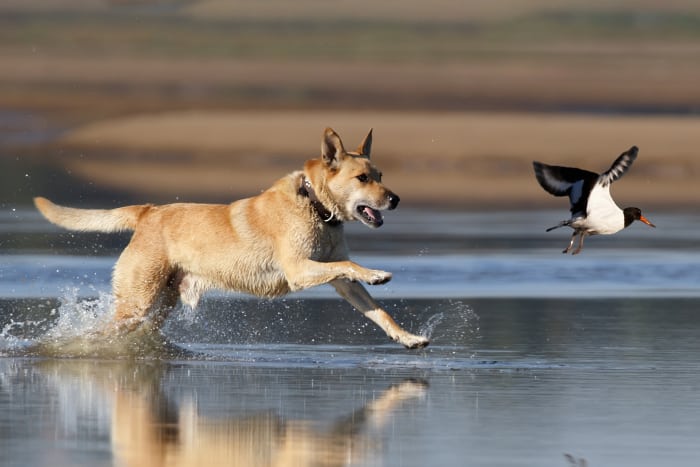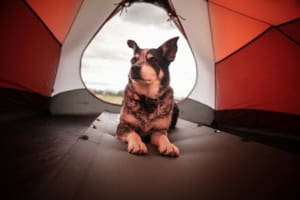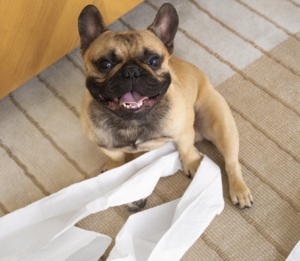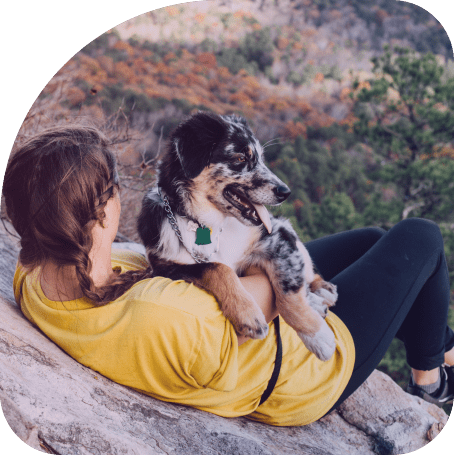Does your dog love to chase squirrels or birds, tear apart their toys, or follow a scent on the ground? Have you ever wondered if it is possible to stop these behaviors? Although these behaviors can be challenging and frustrating, they are natural and important for your dog to practice.
In this blog post, we’ll explore the concept of predation in dogs and how it influences their behavior. We’ll also provide tips on how to reinforce positive behaviors in your dog.
What is Predation?
Predation is the endorphin-filled instinct for your dog to hunt and eat animals. It may sound harsh, but it doesn’t have to be. Over many years of careful breeding, different parts of the predation sequence have been emphasized and diminished.
The predation sequence that your dog performs is one of the key behavioral distinctions between dog breeds. While each dog’s specific behaviors are unique, the breed of dog tells us which prey instincts will be more pronounced than the others.
Understanding the Predation Sequence
Let’s explore the steps of a complete predation sequence to better understand our dogs, their behaviors, and what each behavior means. According to trainer and author Simone Mueller, the prey sequence is:
- Orientation
- Stalk
- Creep
- Chase
- Grab-bite
- Kill-bite
- Possess
- Dissect
- Consume
Orientation is the starting point for the predatory sequence. Here, the dog orientates to their environment and their prey. Next up is stalking, when your dog spots prey. After stalking, they creep forward as closely as possible toward the prey before the chase ensues. If the dog is successful in its chase, they will grab-bite and kill-bite the prey.
After the animal is dead, the dog might hold onto it for a while or possess it before dissecting and consuming it.
Selective Breeding and the Predation Sequence
Each breed has been selectively bred to focus on certain parts of the predation sequence. This means you’ll see certain parts of the sequence more pronounced in your dog and other parts that your dog won’t do at all.
Even if your dog is bred to focus on only one part of the prey sequence, it still fills them with the same neurotransmitters that make us feel good when we succeed at something too.
For example, border collies are selectively bred to help humans with herding animals. Thus the prey sequences highlighted and reinforced during the breeding of border collies are stalking, creeping, and chasing. Other breeds, such as spaniels, retrievers, and hounds, have different parts of the sequence highlighted in their breeding.
Reinforcing Positive Behaviors
So how do we help our dogs not chase and kill animals, specifically using positive reinforcement? Unfortunately, there is no easy or straightforward one-step answer, since this is a deep-rooted instinct in our dogs.
What we can do, however, is reinforce certain steps in the predation sequence, such as stalking. This may seem counter-intuitive, but trust us, it works. Over time, the behavior that is reinforced strongly by you (let’s say the stalking portion) will last longer, giving you time to step in and clip a leash on while still giving our dogs the rush of endorphins they would normally get from the chase, but this time it’s just from the stalk. We have seen significant success from reinforcing actions such as stalking but not chasing.
In addition to reinforcing certain steps of the predation sequence, providing plenty of mental and physical stimulation can help decrease a dog’s prey drive. Another method you can use to help with your dog’s prey drive is to include structured walks in your daily routine, which means you focus on training while you go for a walk, as opposed to just walking mindlessly, keeping your dog on a leash or a long line, and playing predation games such as fetch, find it and playing with flirt poles.
It’s important to note that punishing a dog for displaying natural predatory behaviors is not an effective or humane solution. Punishment can lead to fear, anxiety, and aggression in dogs, and it doesn’t address the root cause of the behavior. Instead, it’s best to focus on reinforcing desirable behaviors and providing alternative outlets for their instincts.
In conclusion, understanding the predation sequence can help us better understand our dogs’ behaviors and instincts. It’s important to remember that these behaviors are natural and instinctive, and punishing a dog for displaying them is not an effective solution. By reinforcing desirable behaviors, providing alternative outlets for their instincts, and engaging them in mentally and physically stimulating activities, we can help decrease a dog’s prey drive and prevent them from engaging in unwanted behaviors.
If you’re struggling with your dog’s prey drive, consulting with a professional positive reinforcement dog trainer can be helpful in developing a personalized plan for your dog. Remember, with patience, consistency, and positive reinforcement, we can help our dogs thrive and live their best lives!
There is so much more to know on this subject, so we encourage you to check out the book “Hunting Together, Harnessing Predatory Chasing in Family Dogs through Motivation-Based
Training” by Simone Mueller, to learn more!



